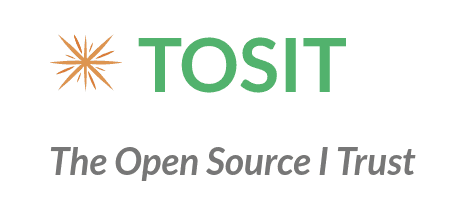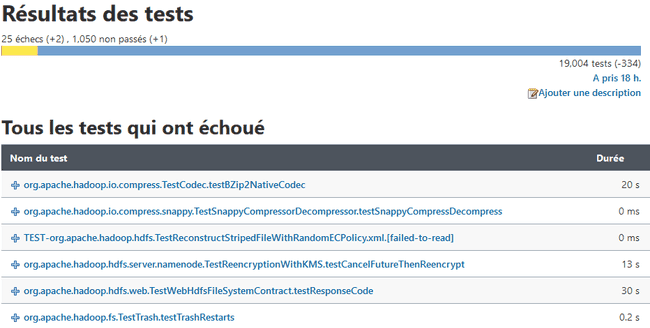Ever since Cloudera and Hortonworks merged, the selection of business Hadoop distributions for on-prem workloads basically boils right down to CDP Private Cloud. CDP might be seen because the “better of each worlds” between CDH and HDP. With HDP 3.1’s Finish of Assist coming in December 2021, Cloudera’s purchasers are “pressured” emigrate to CDP.
What about purchasers which are not able to upgrading repeatedly to observe EOS dates? Another purchasers are not within the cloud options highlighted by Cloudera and simply need to preserve operating their “legacy” Hadoop workloads. Hortonworks’ HDP was once downloadable free of charge and a few corporations are nonetheless eager about having a Huge Information distribution with out assist for non enterprise essential workloads.
Lastly, some are nervous in regards to the wise lower in open-source contributions for the reason that two corporations have merged.
Trunk Information Platform (TDP) was designed with these problematics in thoughts: shared governance on the way forward for the distribution, accessible free of charge and 100% open-source.
TOSIT
TOSIT (The Open Supply I Belief) is a French non-profit group selling open-source software program. Some founding members embrace trade leaders reminiscent of Carrefour (retail), EDF (power) and Orange (telecommunications) in addition to the French Ministry for the Economy and Finance.
The work on “Trunk Information Platform” (TDP) has been initiated by way of talks between EDF and the French Ministry for the Economic system and Finance concerning the standing of their enterprise Huge Information platforms.
Trunk Information Platform
Apache Elements
The core thought of Trunk Information Platform (TDP) is to have a safe, sturdy base of well-known Apache initiatives of the Hadoop ecosystem. These initiatives ought to cowl a lot of the Huge Information use instances: distributed filesystem and computing sources in addition to SQL and NoSQL abstractions to question the information.
The next desk summarizes the parts of TDP:
| Part | Model | Base Apache Department Title |
|---|---|---|
| Apache ZooKeeper | 3.4.6 | release-3.4.6 |
| Apache Hadoop | 3.1.1-TDP-0.1.0-SNAPSHOT | rel/release-3.1.1 |
| Apache Hive | 3.1.3-TDP-0.1.0-SNAPSHOT | branch-3.1 |
| Apache Hive 1 | 1.2.3-TDP-0.1.0-SNAPSHOT | branch-1.2 |
| Apache Tez | 0.9.1-TDP-0.1.0-SNAPSHOT | branch-0.9.1 |
| Apache Spark | 2.3.5-TDP-0.1.0-SNAPSHOT | branch-2.3 |
| Apache Ranger | 2.0.1-TDP-0.1.0-SNAPSHOT | ranger-2.0 |
| Apache HBase | 2.1.10-TDP-0.1.0-SNAPSHOT | branch-2.1 |
| Apache Phoenix | 5.1.3-TDP-0.1.0-SNAPSHOT | 5.1 |
| Apache Phoenix Question Server | 6.0.0-TDP-0.1.0-SNAPSHOT | 6.0.0 |
| Apache Knox | 1.6.1-TDP-0.1.0-SNAPSHOT | v1.6.1 |
Be aware: The variations of the parts have been chosen to make sure inter-compatibility. They’re roughly based mostly on the most recent model of HDP 3.1.5.
The desk above is maintained in the principle TDP repository.
Our repositories are primarily forks of particular tags or branches as talked about within the above desk. There’s no deviation from the Apache codebase apart from the model naming and a few backports of patches. Ought to we contribute significant code to any of the parts that may profit the neighborhood, we’ll undergo the method to submit these contributions to the Apache code base of every venture.
One other core idea of TDP is to grasp all the things from constructing to deploying the parts. Let’s see the implications.
Constructing TDP
Constructing TDP boils right down to constructing the underlying Apache initiatives from supply code with some slight modifications.
The issue lies within the complexity of the initiatives and their many inter-dependences. As an illustration, Apache Hadoop is a 15+ years outdated venture with greater than 200000 strains of code. Whereas a lot of the parts of TDP are Java initiatives, the code we’re compiling additionally contains C, C++, Scala, Ruby and JavaScript. To make sure reproducible and dependable builds, we’re utilizing a Docker image containing all the things wanted for constructing and testing the parts above. This picture was closely impressed by the one current in Apache Hadoop venture however we’re planning on making our personal.
Many of the parts of TDP have some dependencies on different parts. For instance, right here is an excerpt of TDP Hive’s pom.xml file:
storage-api.model>2.7.0storage-api.model>
tez.model>0.9.1-TDP-0.1.0-SNAPSHOTtez.model>
super-csv.model>2.2.0super-csv.model>
spark.model>2.3.5-TDP-0.1.0-SNAPSHOTspark.model>
scala.binary.model>2.11scala.binary.model>
scala.model>2.11.8scala.model>
tempus-fugit.model>1.1tempus-fugit.model>On this case, Hive depends upon each Tez and Spark.
We created a tdp listing in each repository of the TDP initiatives (instance here for Hadoop) during which we offer the instructions used to construct, check (lined within the subsequent part) and package deal.
Be aware: Be certain to verify our earlier articles “Build your open source Big Data distribution with Hadoop, HBase, Spark, Hive & Zeppelin” and “Installing Hadoop from source: build, patch and run” if you wish to have extra particulars on the method of constructing inter-dependent Apache initiatives of the Hadoop ecosystem.
Testing TDP
Testing is a essential a part of the method of releasing TDP. As a result of we’re packaging our personal releases for every venture in an interdependent vogue, we have to be sure that these releases are suitable with one another. This may be achieved by operating unit assessments and integration assessments.
As most of our initiatives are written in Java, we selected to make use of Jenkins to automate the constructing and testing of the TDP distribution. Jenkins’ JUnit plugin could be very helpful for a whole reporting of the assessments we run on every venture after compiling the code.
Right here is an instance output for the check report of Apache Hadoop:
Similar to the builds, we additionally dedicated the TDP testing instructions and flags in every of the repositories’ tdp/README.md information.
Be aware: Some high-level details about our Kubernetes-based constructing/testing surroundings might be discovered here on our repository.
Deploying TDP
After the constructing section we simply described, we’re left with .tar.gz information of the parts of our Hadoop distribution. These archives package deal binaries, compiled JARs and configuration information. The place can we go from right here?
To maintain in step with our philosophy of preserving management over the entire stack, we determined to write down our personal Ansible assortment. It comes with roles and playbooks to handle the deployment and configuration of the TDP stack.
The tdp-collection is designed to deploy all of the parts with safety (Kerberos authentication and TLS) and excessive availability by default (when doable).
Right here is an excerpt of the “hdfs_nn” subtask of the Hadoop function which deploys the Hadoop HDFS Namenode:
- identify: Create HDFS Namenode listing
file:
path: "{{ hdfs_site['dfs.namenode.name.dir'] }}"
state: listing
group: '{{ hadoop_group }}'
proprietor: '{{ hdfs_user }}'
- identify: Create HDFS Namenode configuration listing
file:
path: '{{ hadoop_nn_conf_dir }}'
state: listing
group: '{{ hadoop_group }}'
proprietor: '{{ hdfs_user }}'
- identify: Template HDFS Namenode service file
template:
src: hadoop-hdfs-namenode.service.j2
dest: /usr/lib/systemd/system/hadoop-hdfs-namenode.serviceTDP Lib
The Ansible playbooks might be run manually or by way of the TDP Lib which is a Python CLI we developed for TDP. Utilizing it offers a number of benefits:
- The lib makes use of a generated DAG based mostly on the dependencies between the components to deploy all the things within the right order;
- All of the deployment logs are saved in a database;
- The lib additionally manages the configuration versioning of the parts.
What about Apache Ambari?
Apache Ambari is an open-source Hadoop cluster administration UI. It was maintained by Hortonworks and has been discontinued in favor of Cloudera Supervisor which isn’t open-source. Whereas it’s an open-source Apache venture, Ambari was strongly tied to HDP and was solely able to managing Hortonworks Information Platform (HDP) clusters. HDP was distributed as RPM packages and the method utilized by Hortonworks to construct these RPMs (ie: the underlying spec information) was by no means open-source.
We assessed that the technical debt of sustaining Ambari for the sake of TDP was an excessive amount of to be worthwhile and determined to start out from scratch and automate the deployment of our Hadoop distribution utilizing the trade customary for IT automation: Ansible.
What’s subsequent?
TDP continues to be a work in progress. Whereas we have already got a strong base of Hadoop-oriented initiatives, we’re planning on increasing the listing of parts within the distribution and experimenting with new Apache Incubator initiatives like Apache Datalab or Apache Yunikorn. We additionally hope to have the option quickly to contribute code to the Apache trunk of every venture.
The designing of a Net UI can also be in the works. It ought to have the ability to deal with all the things from configuration administration to service monitoring and alerting. This Net UI can be powered by the TDP lib.
We invested lots of time within the Ansible roles and we’re planning to leverage these sooner or later admin interface.
Getting concerned
The best option to become involved with TDP is to undergo the Getting started repository during which it is possible for you to to run a completely useful, secured and extremely accessible TDP set up in digital machines. You can even contribute by way of pull requests or report issues within the Ansible assortment or at any of the TOSIT-IO repositories.
If in case you have any questions, be happy to achieve out at david@adaltas.com.









